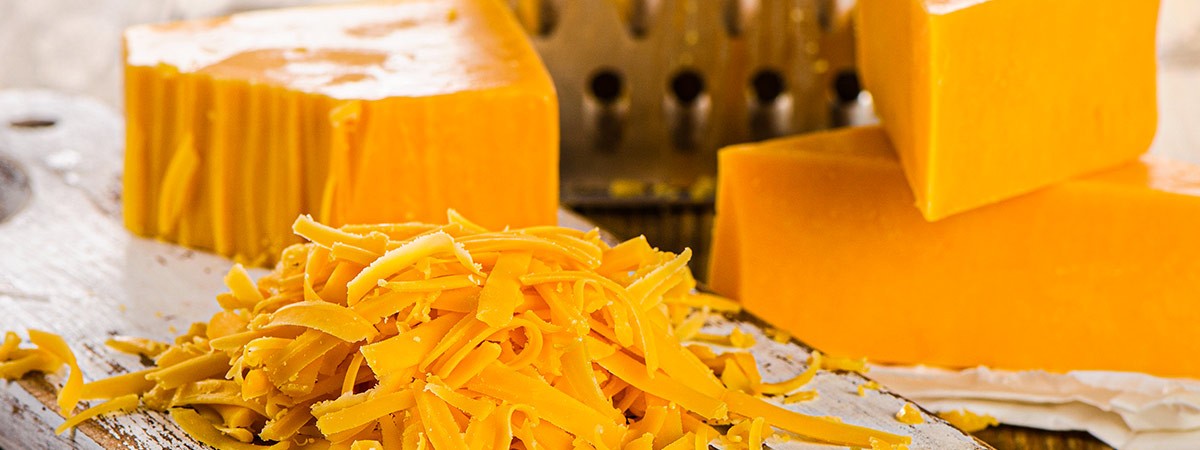Cheesemaking is an exercise in patience. A “young” cheese can be produced in just a few hours, but many varieties require longer and more labor-intensive processes or extra maturing time to reach the taste and texture they are famed for. Vacuum can help speed up certain stages and reduce the physical workload for cheesemakers. And, in mass production, it is an essential part of getting cheese from dairy to supermarket shelf.

Giving Cheddar its Crumble
Vacuum for the right texture
Sliced in a sandwich, grated on top of pizza, melted in a creamy sauce, or as a simple snack: Cheese has been a staple and favorite food for thousands of years. Starting at the dairy farm, the cheese industry uses vacuum pumps from Busch in a variety of ways – including in some less expected processes in forming and packaging.
Cheesemaking is an exercise in patience. A “young” cheese can be produced in just a few hours, but many varieties require longer and more labor-intensive processes or extra maturing time to reach the taste and texture they are famed for. Vacuum can help speed up certain stages and reduce the physical workload for cheesemakers. And, in mass production, it is an essential part of getting cheese from dairy to supermarket shelf.
Cheesemaking is an exercise in patience. A “young” cheese can be produced in just a few hours, but many varieties require longer and more labor-intensive processes or extra maturing time to reach the taste and texture they are famed for. Vacuum can help speed up certain stages and reduce the physical workload for cheesemakers. And, in mass production, it is an essential part of getting cheese from dairy to supermarket shelf.
Why are so many cheeses round?
Although we rarely purchase them that way in the supermarket, many varieties of cheese start out as part of an enormous wheel. The shape is not just down to tradition; there are also more practical reasons. At first, it was most likely because of the shape of the storage vessel that was available: The earliest traces of cheese, dating back to over 7,000 years ago, were found in round pottery bowls. However, even as humans experimented with different container shapes, cheese has remained resolutely round for different reasons throughout its creation process. When making cheese, cheesemakers discovered that although rectangular molds save valuable space, they are not as robust. There is also an effect during the maturing stage. Unlike a circle, a square or rectangular shape has corners and edges, which create weak points where microbes can penetrate. This can lead to over-ripening and the cheese going off more quickly. And then there is one more practical reason when it comes to transport: Round objects roll, making it easier to transport a large and heavy cheese from one place to another without additional equipment!
Although we rarely purchase them that way in the supermarket, many varieties of cheese start out as part of an enormous wheel. The shape is not just down to tradition; there are also more practical reasons. At first, it was most likely because of the shape of the storage vessel that was available: The earliest traces of cheese, dating back to over 7,000 years ago, were found in round pottery bowls. However, even as humans experimented with different container shapes, cheese has remained resolutely round for different reasons throughout its creation process. When making cheese, cheesemakers discovered that although rectangular molds save valuable space, they are not as robust. There is also an effect during the maturing stage. Unlike a circle, a square or rectangular shape has corners and edges, which create weak points where microbes can penetrate. This can lead to over-ripening and the cheese going off more quickly. And then there is one more practical reason when it comes to transport: Round objects roll, making it easier to transport a large and heavy cheese from one place to another without additional equipment!